GUEST POST by John Davis
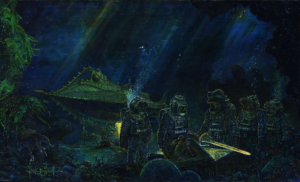
I had the utterly remarkable chance to ask Mr. Jack Hood, world renowned designer, film maker, model artist, sculptor, painter teacher and author, to take a couple minutes to answer questions which might inspire others. His tantalizing background would take a book to do justice, so I thought I could best summarize it this way:
After completing his four-year hitch with the Air Force, Jack worked as artist/exhibits designer at NASA until the moon program closed at the end of the 70s. He then became Art Director of Theme Display at Walt Disney World and continued to work on at freelance artwork. When Disney stepped down its work force after the completion of EPCOT, Jack worked several jobs including: theme park designs with Warner Tec and Advanced Animations, “Inhumanoids” toy line Director with Hasbro, and even created a 20 minute Christmas special called “Holly Boy”.
Jack so impressed NASA executives during his time on the Apollo Program in the early 60s that he was asked to return to Marshall Space Flight Center to head up the Art Department. Now retired, he writes stories based on ideas dreamt up during all his wild experiences designing exhibits, dioramas and other works of art. (Please catch a review of one his books: One Dark Secret)
But, let me now get to the questions for Jack Hood!
- Q1) What three things do you want the world to know about your work?
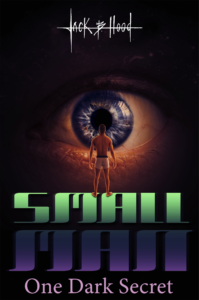
1. The fiction that I write, is based on actual experiences and ideas stimulated by the profound realizations that come out of what is commonly referred to as REALITY. I have seldom met someone who was as mystified by life as am I. The world, and all the details and wonderful questions that reality brings to my mind just beg to be recorded in some way either sketched out and painted, or written down. Now that I have a computer to help me with my ideas, I can also even build models and animate them to help my dreams take on a more solid form of reality.
2. Somehow, when I am writing and putting my stories to paper, I find the stories beginning to write themselves.
3. I am concerned that those who finally read my works are presented with the information, and the revelation of the ideas are presented with my words the way people actually talk. This is so important to me that I often read my works out loud, and record them so that I can listen to how the stories are revealed and how it sounds… how the characters sound.
- Q2) What most influenced you in the development of your skill?
My father was a farm boy that found out about the U.S. Navy and decided to join up. He served his hitch and then went back to the farm… but he missed the sea so much that he rejoined the Navy and started all over again as a lowly seaman. But…over the years he worked his way up to Lt. Commander. He was able to do this because of his unique way of looking at the world and working with other people. The men who worked under his directions loved him and often told me so. I was able to pursue my own way in the world because of his willingness to allow me to be myself and not just a carbon copy. He allowed me to become an artist.
As a little boy following my Dad’s career as a Sailor during World War Two, me and my Mother, Vida, traveled all over the place. My Mom and I were in Pearl Harbor when it was bombed. I was only three years old at the time. We were living with a Chinese family in a little shack because my Dad was still trying to find a permanent place for us to live. My Mom and I were very close because of Dad’s being at sea for so many months during that War. I was happy when they finally dropped the Atomic Bomb because it finally ended that war and gave me back my Dad. Both my Mom and Dad were instrumental in my becoming an artist. They were always tossing me some crayons and a notebook and telling me to entertain myself by drawing pictures.
- Q3) What are you most proud of in your artwork?
I am most proud of the solution to a problem I had in trying to convert my use of mediums from oil paint to acrylics. Acrylics gave me a faster way to paint details, but blending colors subtly was easier with oils. However painting with oils required more time to dry and therefore, slowed down my ability to paint as quickly as was required by my job at NASA. So I came up with a quicker way to blend my acrylic colors to make subtle changes in hue by mixing at least three color transitions in small bottles and then blending from one extreme color to another by working with the three transition colors rather than forcing one extreme color to blend with the other extreme. This technique allowed me to work in acrylics with the same ease of blending colors and creating desired detail, as I had been able to do with oil paints.
- Q4) What is the most important thing you would advise others new to the field?
In approaching creating art pieces, learn how to master in your mind the basics of how objects are made up of the four basic forms in reality. Those basics are 1) The Sphere 2) The Cube 3) The Cylinder and 4)The Cone. When you see an object, force your mind and imagination to break down the complex shapes and forms into these four basics. This practice will allow you train yourself to see very complex objects in a sort of a SHORTHAND structure made up of the four basic forms. Over time, your memory will help you to use this technique to draw objects from memory without having to actually see an example of what you wish to draw.
- Q5)May we see some of your work?
Here are some photos:
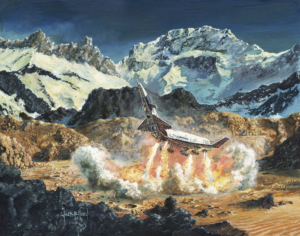
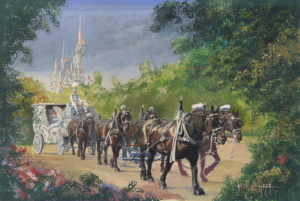
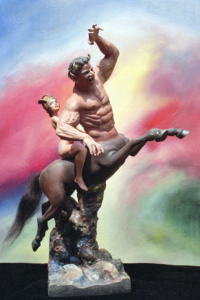
- Q6) How can you be reached to get some of your work?
jackbhood@mac.com
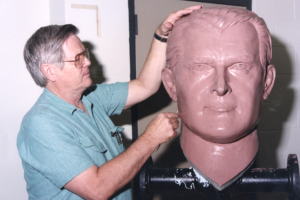
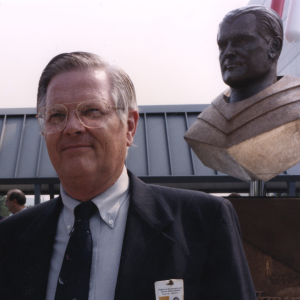
~Guest post by John Davis
John William Davis is a retired US Army counterintelligence officer and linguist. As a linguist, Mr. Davis learned five languages, the better to serve in his counterintelligence jobs during some 14 years overseas. He served in West Germany, Italy, and the Netherlands during the Cold War. There he was active in investigations directed against the Communist espionage services of the Soviet Union and Warsaw Pact. His mission was also to investigate terrorists such as the Red Army Faction in Germany, the Red Brigades in Italy, and the Combatant Communist Cells (in Belgium) among a host of others.
His work during the Cold War and the bitter aftermath led him to write Rainy Street Stories, ‘Reflections on Secret Wars, Terrorism, and Espionage’. He wanted to talk about not only the events themselves, but also the moral and human aspects of the secret world as well.
Click to Read John’s Complete Profile

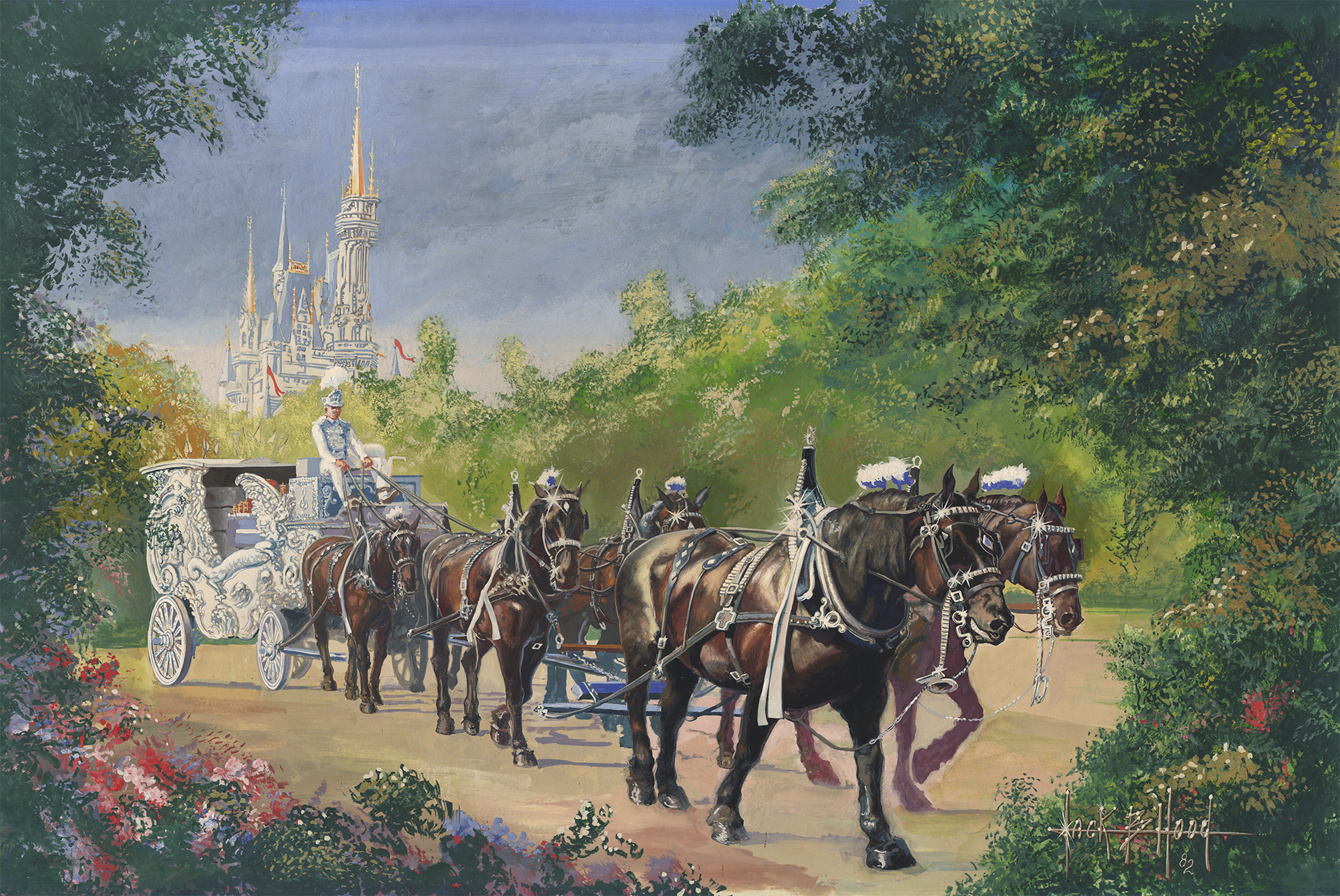
Excellent
Those basics are 1) The Sphere 2) The Cube 3) The Cylinder and 4)The Cone.
Thanks for the advice, does elliptical have a place in that or does that fall under cylinder?
It would fall under cylinder as a diagonal slice through it.At least that’s he way I use it.
John, I hope you continue to do these guest posts. They are interesting.
I think I’ll try using those basics to remember people better. In particular a lady’s hair. For some strange reason I always have trouble remembering exactly how a lady’s hair was. It drives me crazy. lol
Interesting.